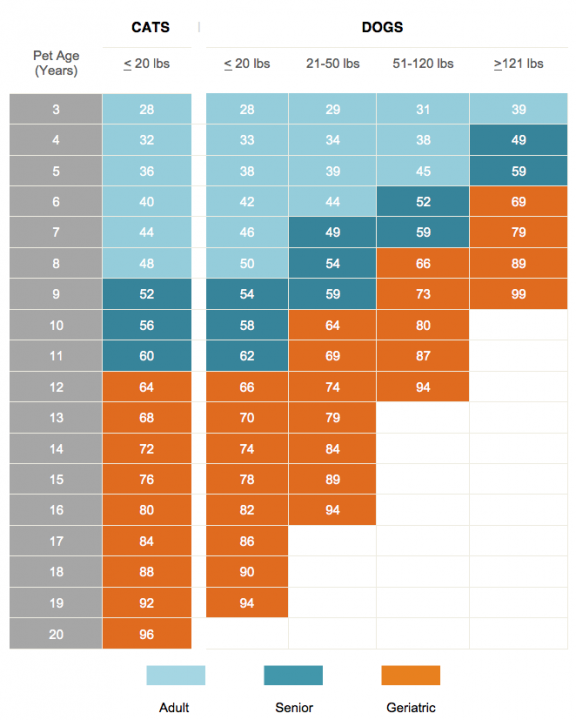Senior and geriatric pets are a growing segment of the pet population largely due to advances in preventative health care and treatment options for various diseases and conditions. Elderly pets are also more prone to developing a chronic illness. These illnesses often have clinical signs that may be vague or even difficult for a pet owner to recognize as abnormal.
Veterinary Professionals Read More
Life Stages: Adult, Senior, or Geriatric?
Classification of life stage and differentiating an adult from a senior or a geriatric pet has been somewhat arbitrary, and over the years various pet/human age analogy charts have been developed. It’s widely known that lifespan of dogs can be associated with breed type. For example toy breeds typically live longer than giant breed dogs. As such, it’s been suggested that the classification of life stage should be associated with the weight of the dog and not its age.

(Adapted from: Fortney WD: Implementing a Successful Senior/Geriatric Health Care Program for Veterinarians, Veterinary Technicians, and Office Managers. Vet Clin North Am Small Anim Pract 2012;42:823–834)
Many veterinary care providers offer senior and geriatric wellness or other health care programs in an effort to promote early detection and treatment of diseases that might otherwise affect quality of life and/or the longevity of a pet. These plans generally include performing a physical examination, blood and urine testing, and measuring blood pressure every 6 to 12 months.
A recent study of 100 senior and geriatric dogs that were considered to be healthy by their owners revealed some information that supports the recommendation for regular health screening of senior and geriatric pets.
All dogs enrolled in this study had a comprehensive physical, orthopedic, and neurologic exam, as well as blood and urine testing, and the following were discovered:
Pet owners play a critical role in identifying and reporting health problems in their pets, however this study also showed that they don’t always know normal from abnormal or that they may attribute a change in their pet to aging and not a medical problem. Pet guardians should be attentive to changes in water consumption, urination, appetite, activity, weight, among others. Detecting changes in any of these warrants further evaluation by a veterinary professional.
Remember, age is not a disease and we can do a lot for our elderly pets - through early detection and intervention - to promote their well being and quality of life.